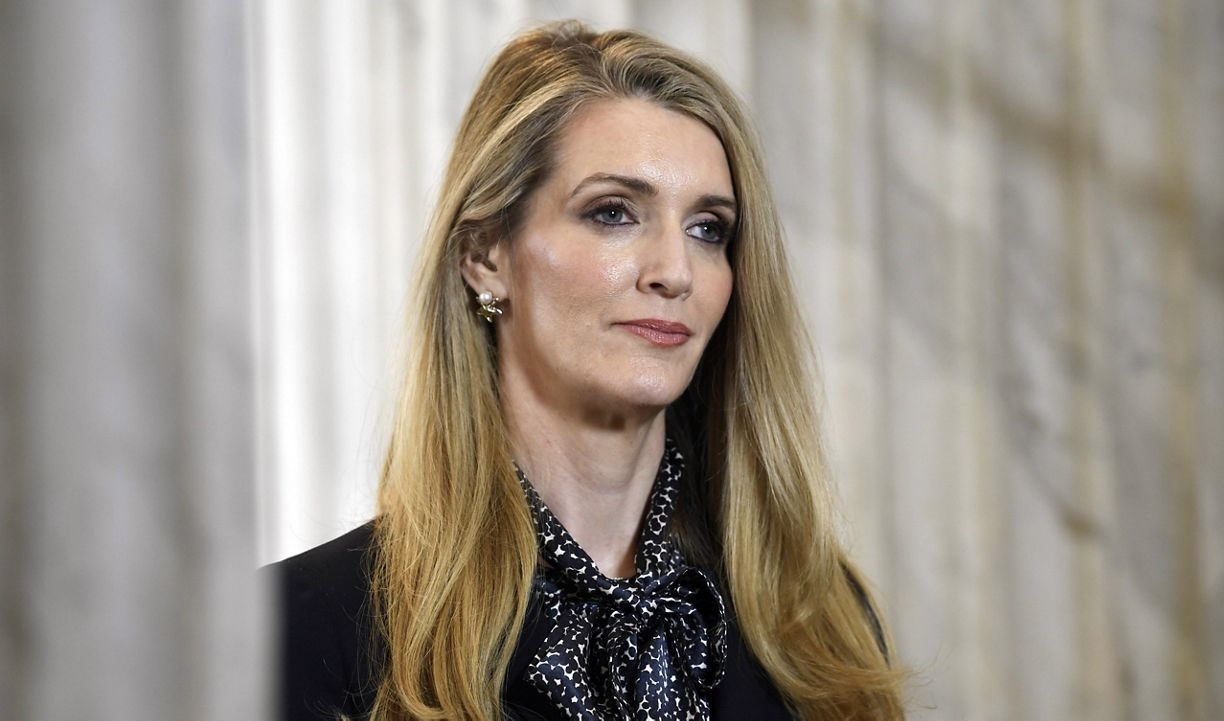Loeffler Visits SBA, Urges Return to Office in the Midst of Intense Debate
On her second day at the Small Business Administration (SBA), Kelly Loeffler, the newly confirmed head of the agency, made waves with a video that quickly went viral. In the clip, Loeffler walked through the SBA offices in Washington, D.C., drawing attention to a startling finding: nearly 90% of the agency’s employees were still working from home. Her message was clear—this trend needed to end, as President Trump’s new executive order called for federal workers to return to the office.
Loeffler’s video, which has been viewed by millions, begins with her expressing excitement about her new role at the SBA. “It’s my second day here at the SBA, and I could not be more excited to be here,” she states enthusiastically. But her tone shifts as she discusses what she discovered during her office walk-through. “I thought I’d take a walk, and what I found is that exactly what’s been said is true. About 90% of our employees are working from home,” Loeffler reveals. She then emphasizes that this situation will change, starting Monday, when a new directive will force federal workers back into the office in compliance with the president’s order.
Her comments bring to light concerns raised by the Trump administration about the inefficiency and lack of accountability that remote work may foster. Loeffler specifically highlighted that the absence of employees in the office was not just a logistical issue but one that compromised performance standards and operational effectiveness. While some have supported her stance, others have voiced opposition, highlighting the benefits of remote work.
Supporters of the work-from-home model, which became widespread during the COVID-19 pandemic, have voiced their concerns about the policy. Anna Matson, a market researcher, criticized the directive, arguing that remote work offers flexibility that benefits many families. “For some, having one or both parents work remotely is essential,” Matson said. She warned that forcing workers back into the office could harm families’ work-life balance and drive valuable talent to the private sector. These supporters argue that modern work policies should prioritize flexibility, especially as technological advancements have made remote work more feasible than ever before.
On the other hand, advocates for Loeffler’s approach and the Trump administration’s stance contend that the federal workforce needs to be physically present to ensure accountability. Jeremy Carl, a former Deputy Assistant Secretary of the Interior Department, argued that a lack of in-office presence has made it difficult to enforce performance standards. “When you don’t have to show up to the office, and there is no accountability for your performance, that is a recipe for disaster,” Carl remarked, reflecting the administration’s belief that a physically present workforce fosters greater efficiency.
The debate surrounding remote work for federal employees is part of a broader conversation about the future of work in government. Before the pandemic, traditional office work was the norm, but the shift to remote work during COVID-19 demonstrated that many jobs could be done effectively from home. Now, as the country recovers from the pandemic, the question remains whether remote work should continue in some capacity.
The executive order from President Trump marks a deliberate effort to bring federal employees back to the office. Supporters of the initiative argue that the move will improve productivity, enhance government operations, and address inefficiencies. However, critics believe that it reflects an outdated approach, ignoring the benefits of flexible work arrangements that many have come to rely on.
The conversation around remote work is also tied to the broader agenda of the Department for Government Efficiency (DOGE), which aims to cut wasteful spending and streamline federal operations. With support from prominent figures like Elon Musk, DOGE has pushed to eliminate inefficiencies and make the government more accountable. The end of remote work is seen as one aspect of this larger effort to ensure that taxpayer dollars are spent wisely and that government employees are held to high performance standards.
The decision to mandate a return to the office will have far-reaching implications for federal workers, many of whom have grown accustomed to the flexibility of remote work. For some, the return to the office is a loss of work-life balance and an increased burden of commuting. For others, it may be a welcome change that improves accountability and efficiency.
As the debate continues, it has become clear that the issue is not just about remote work versus in-office work but about finding the right balance between efficiency, accountability, and flexibility in the federal workforce. While some see the return to the office as a necessary step to improve government operations, others argue that it risks undermining the progress made during the pandemic.
Loeffler’s video and the ensuing debate have sparked a broader discussion about the future of federal work policies, highlighting the complexities of balancing the need for accountability with the desire for more flexible work arrangements. As this policy shift unfolds, it will have lasting implications not only for federal agencies but also for the broader conversation on work policies across industries. The outcome of this shift will likely shape the future of government work in a post-pandemic world.
